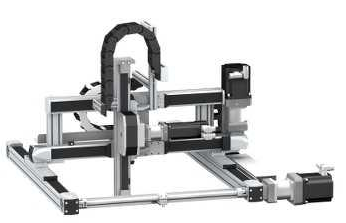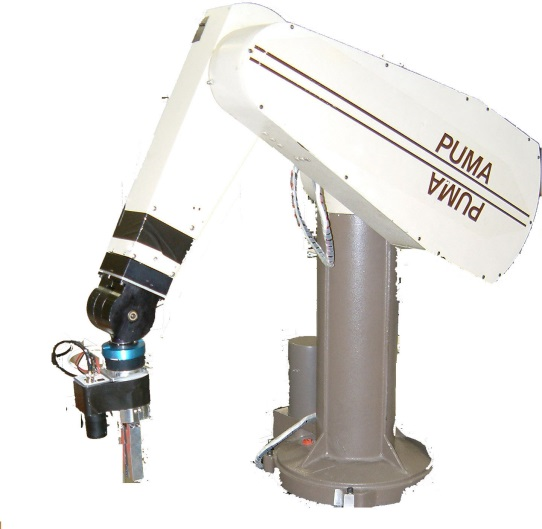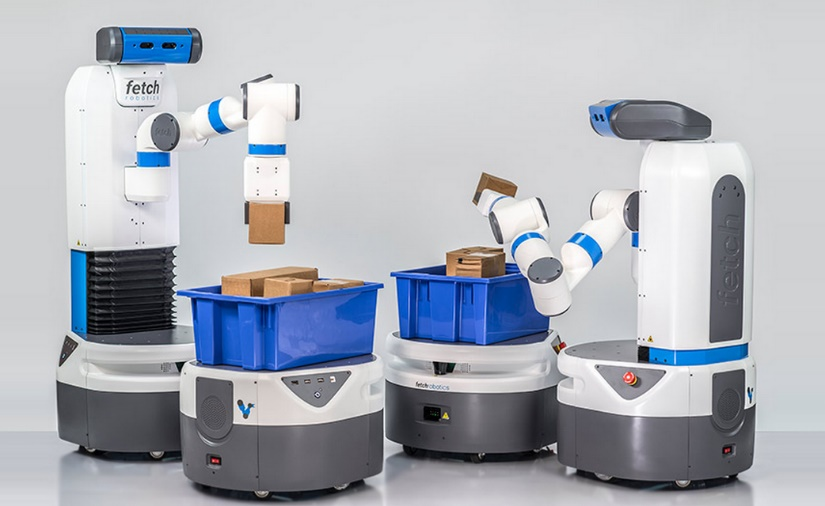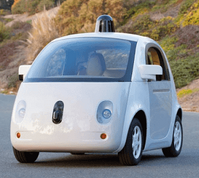By Spencer Paullin
![]()
The rise of the machines is here! Robots are now involved in our everyday lives. You may not see one walking down the street, but chances are a robot helped make or distribute some of the products you use on a daily basis. The demand for robots has been rapidly increasing since 2010, due to robot technology continuously improving and more manufacturers utilizing and implementing automation. “Between 2010 and 2015, the average robot sales increase was at 16% per year (CAGR). The number of robot installations had never increased so heavily before.” (World Robotics 2016)
In this blog, we’ll look at what defines a robot in factory automation, robot and smart camera integration challenges and some solution to these challenges.
Robots in Factory Automation: Not All Robots Look Alike
Steve King, Product Manager for Machine Vision and Lighting at Microscan, outlines six possible definitions for robots that you might find in a factory:
 |
 |
| Multi-Axis Motion Systems | Traditional Industrial Robots |
 |
 |
| Mobile Robots | Warehouse Robots |
 |
 |
| Self-Driving Cars | Collaborative Robots |
Let’s focus on collaborative robots, which can integrate with machine vision smart cameras to complete a task or automate a process.
What is a Machine Vision Smart Camera?
A smart camera on the end of a robot basically acts as a set of eyes that compare an image of the products coming down the production line to a set of criteria. The camera “checks” to make sure the criteria is met or not. Robot applications are enhanced when machine vision and auto-id (barcode reading) are added to them. Mounting a camera to the end of an industrial robotic arm opens up a wide variety of applications, because the arm can traverse around the part being inspected to check a variety of criteria.
What are the Robot Applications that Would Use a Smart Camera?
- Pick and Place – (Locate, Read, Guide)
- Assembly – (Locate, Read, Guide, Check)
- Quality Inspection – (Check, Measure, Read)
- Packaging and Palletizing – (Locate, Read, Guide, Check)
- Lab Analysis and Testing – (Locate, Measure, Read, Guide, Check)
- Screw Driving – (Locate, Guide, Check)
- Labeling – (Locate, Read/Verify)
- Gluing, Dispensing and Welding – (Guide, Check)
- Polishing – (Check)
- Injection Molding – (Check, Measure)
In the “assembly” application example above, a smart camera vision system can locate parts that are to be assembled together. Auto-id can read the labels on parts to make sure the correct parts are being assembled together. The vision system is used to guide the two parts as they are assembled and finally to check and make sure the assembly is correct.
The 5 Challenges of Integrating Machine Vision Smart Cameras with Robotic Applications
Applications which require robots will be able to perform much higher value operations when paired with machine vision and auto-id smart cameras. They will be able to perform their tasks at greater speed with greater accuracy and, in general, it will increase the amount of autonomy – reducing the amount of human operation required to perform the same value operation.
Challenge One: Physical Installation
There may be issues figuring out where to mount the camera. Size plays a crucial factor because industrial applications often have limited space to fit a camera. With machine vision, there are often problems ensuring that there is sufficient contrast to see the objects.
Challenge Two: Cabling
High Flex cables, which are capable of millions of cycles, are required when using vision on a robotic to ensure minimal downtime as a robot performs tasks over and over.
Challenge Three: Programming
Programming needs to be simple yet flexible to complete the tasks required. Integrating the UI of the vision system and robot enhances the user’s ability to control and program the system.
Challenge Four: Calibration
The system must be calibrated to 2D and 3D to the motion system coordinates in order to ensure the smart camera and robot speak to each other.
Challenge Five: Integration of Results
Any data from the machine vision system needs to be formatted in a way the robot can accept common protocols, such as PROFINET, Ethernet/IP and Modbus. The vision system should also be able to display an image.
MicroHAWK Machine Vision Smart Camera Can Do the Job
The MicroHAWK® platform by Microscan offers the most advanced machine vision capability on the world’s smallest smart cameras. Built on the highest-performance imaging engine in its class, MicroHAWK cameras are fully-integrated with optics, processor, lighting, and communications, offering an array of modular hardware options to take on any inspection task in three micro form factors.
MicroHAWK cameras are paired with AutoVISION® simplified machine vision software for barcode reading and basic vision tasks like locate, count, presence/absence, OCR, and more.) and scalable to Visionscape® software for advanced applications. MicroHAWK is unrivaled in the industry for performance in its size and flexibility to meet variety of application requirements and user experience levels.
Microscan’s MicroHAWK was designed specifically to tackle the challenges of integration with different robot applications. End of the robot arm low mass is crucial to not impede or slow down the robot. The MicroHAWK’s tiny size tackles this obstacle so that the robot is free to move as fast as possible. The small profile also allows the smart camera to be built into a robot gripper. Our high-flex cables ensure the robot will be able to perform a high number of inspections. The small size and capabilities of the MicroHAWK smart cameras can overcome many of the challenges related to collaborative robotics in factory automation.
Multiple MicroHAWK smart cameras can be “dense packed” together over a single part for high accuracy and resolution inspection results. This helps to avoid the parallax issue faced by a single camera when looking at all features on a part (such as a hole).
MicroHAWK smart cameras can be packed into the small spaces of embedded applications such as “SMT Pick and Place Machines” or a desktop clinical analyzer. Size, along with integrated lighting options allow the MicroHAWK to excel in embedded applications.
To learn more about integrating miniature smart cameras into robotic applications, watch our Webinar On-Demand:
This article originally appeared on Microscan’s blog, http://microscan.com/en-us/blog, June 6, 2017


